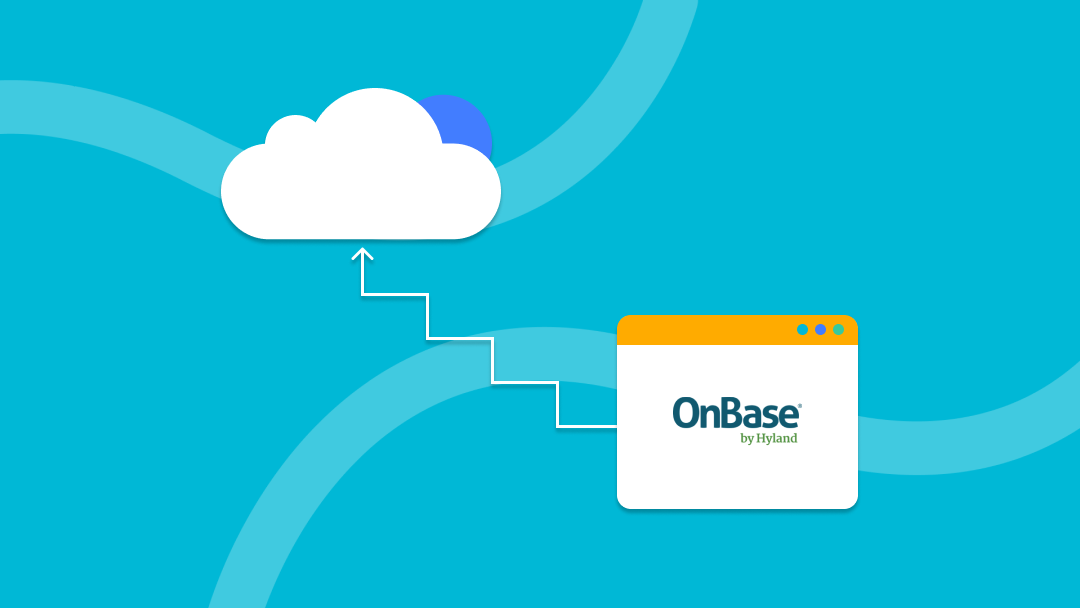You’re ready to build a plan for moving your OnBase to the cloud. How do you get started, and what do you need to consider?
We’ve put together a planning guide to help you think through it all.
1. Who will migrate your OnBase?
Why is this first? Go ahead and start researching or thinking about who you’ll work with to move your OnBase to the cloud. Whether that’s an internal resource or with a partner, you want to make sure they know your system.
The benefit of working with a partner is that they can help you strategize, prepare, and make decisions early on to make your migration less disruptive and risky.
Questions to think through when considering a cloud partner for moving your OnBase to the cloud:
1. How familiar are they with our system and integrations?
2. Can they redesign integrations that aren’t optimized for the cloud?
3. Will they be able to help us when we’re ready to scale?
4. What other related services do they provide that could bring value?
5. What is their support like?
2. Think about your long-term cloud strategy
Use these questions to help you think about your long-term strategy, which you may have already started thinking about:
1. Why are we moving to the cloud?
2. What problems will the cloud help us solve?
3. What is the right cloud migration model for our organization?
4. What teams need to be involved to make the move successful?
5. What is the ROI of moving OnBase to the cloud?
Bringing in other stakeholders and leaders this early to discuss and align on your strategy means less hoops you have to jump through later. Prepare for questions. Expect resistance. A good partner should be able to help you respond to objections.
3. Application cloud readiness assessment
In a 2021 IBM report, cloud misconfiguration caused 15% of security breaches. For breach costs, lost business stole the largest piece of the pie, averaging $1.59 million.
Yep, those are unsettling numbers; however, thoroughly assessing your infrastructure and integrations ahead of migration and hiring a cloud migration partner who knows the ins and outs of your system can help avoid this.
You’ll want to look at your OnBase and integrations in depth to determine if it can/should be migrated to the cloud or if you need to consider a redesign or more compatible application once you’re there.
Here’s what to consider when assessing cloud readiness of your OnBase system:
1. Does your OnBase require an update before moving it to the cloud?
2. Determine complexities of each integrated application’s architecture
3. What are the dependencies between your OnBase applications, systems, and servers?
4. Are security and compliance requirements met to support your OnBase in the cloud?
This step is really important so you can understand how your infrastructure is connected, what needs to remain connected, and in what order to move your connected applications to the cloud. This will also help you identify risks if there was a temporary disconnection during migration.
A good readiness assessment will be designed to avoid disruption, and potentially, a security breach.
4. Make a list of the risks involved
You cannot account for every hurdle that may come with a cloud migration, but you can prepare as much as possible.
For each application OnBase integrates to, lists the risks involved if there was a temporary outage.
Post-move, if you don’t have the resources available, your best bet is to source a cloud partner that can monitor and support you in the cloud. That way, any disconnections with your OnBase can be resolved immediately.
5. Who do you have readily available to support your OnBase in the cloud once you’ve migrated?
We may have said this a few times already, but we have good reason.
Moving to the cloud is inevitable. Make sure you have the resources to support when you’re there.
Cloud does have it’s own set of required skills to maintain. Whether that requires upskilling your team, hiring new talent, finding temporary tech resources, or considering managed services, your plan should include details on how you’ll sustain business in the cloud.
6. What would a successful migration look like?
Finally, how are you going to define success in the cloud?
A few questions to consider:
1. Have you met your goals?
2. How will you monitor that?
3. How are you going to celebrate the success? You’ll want to be sure to plan for internal communications around the move and possibly even externally if it makes sense. Turn your communication into a celebration to share what cloud offers and how people at different levels of the organization will benefit.


0 Comments